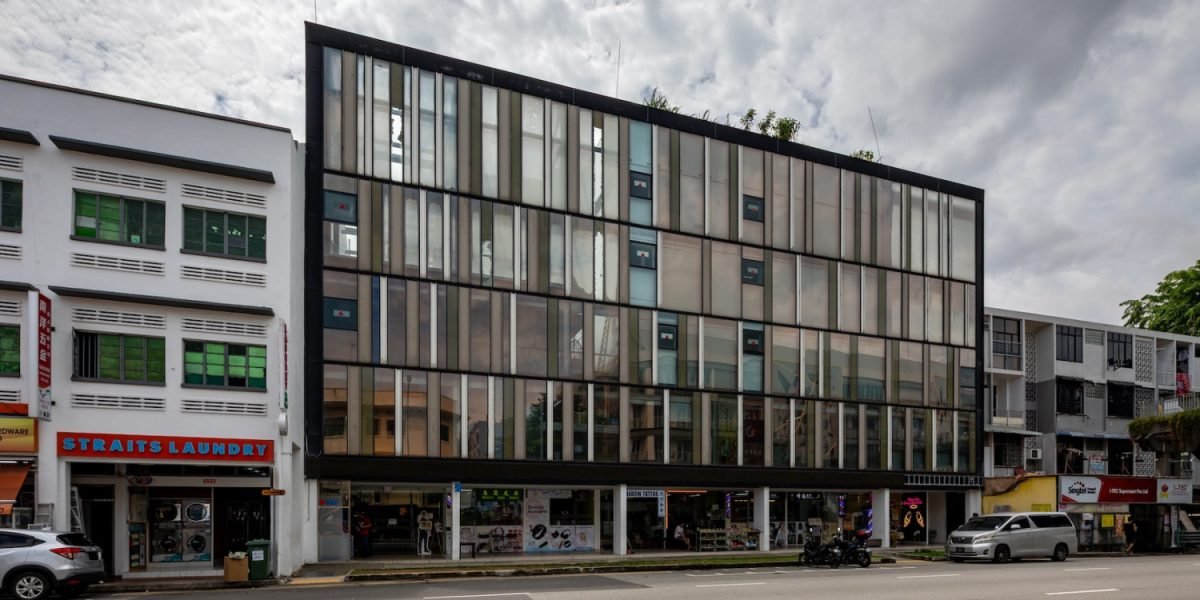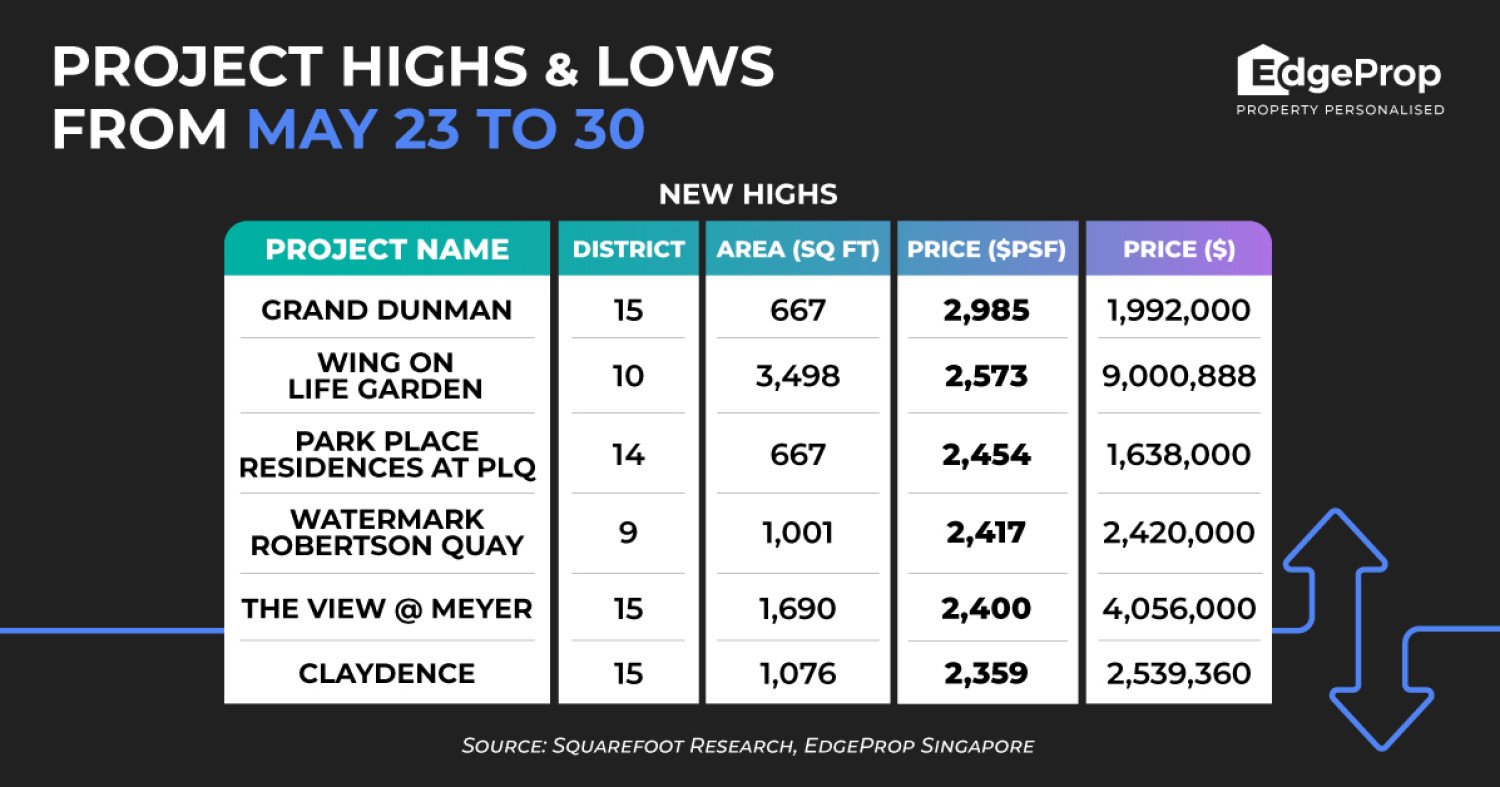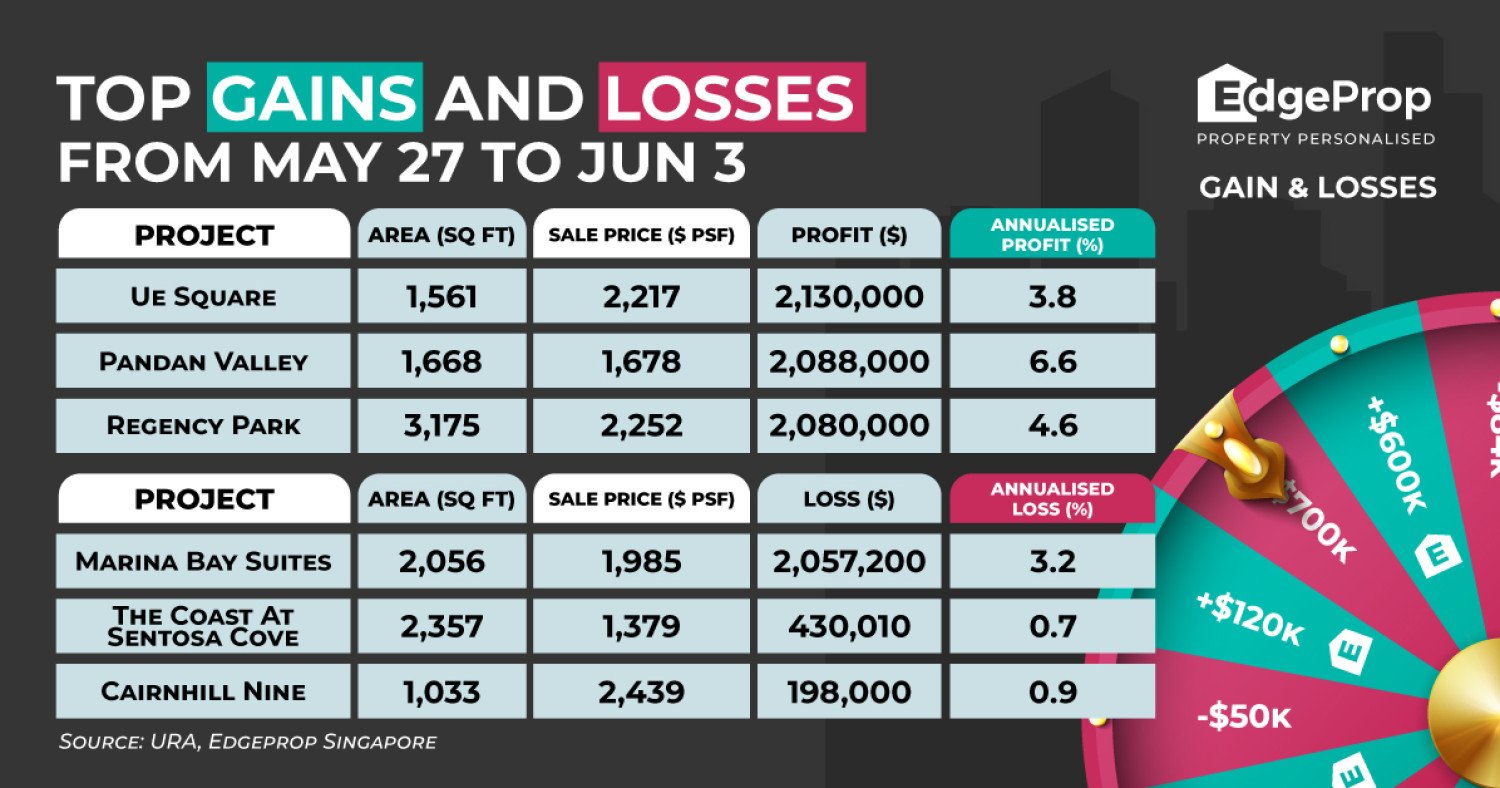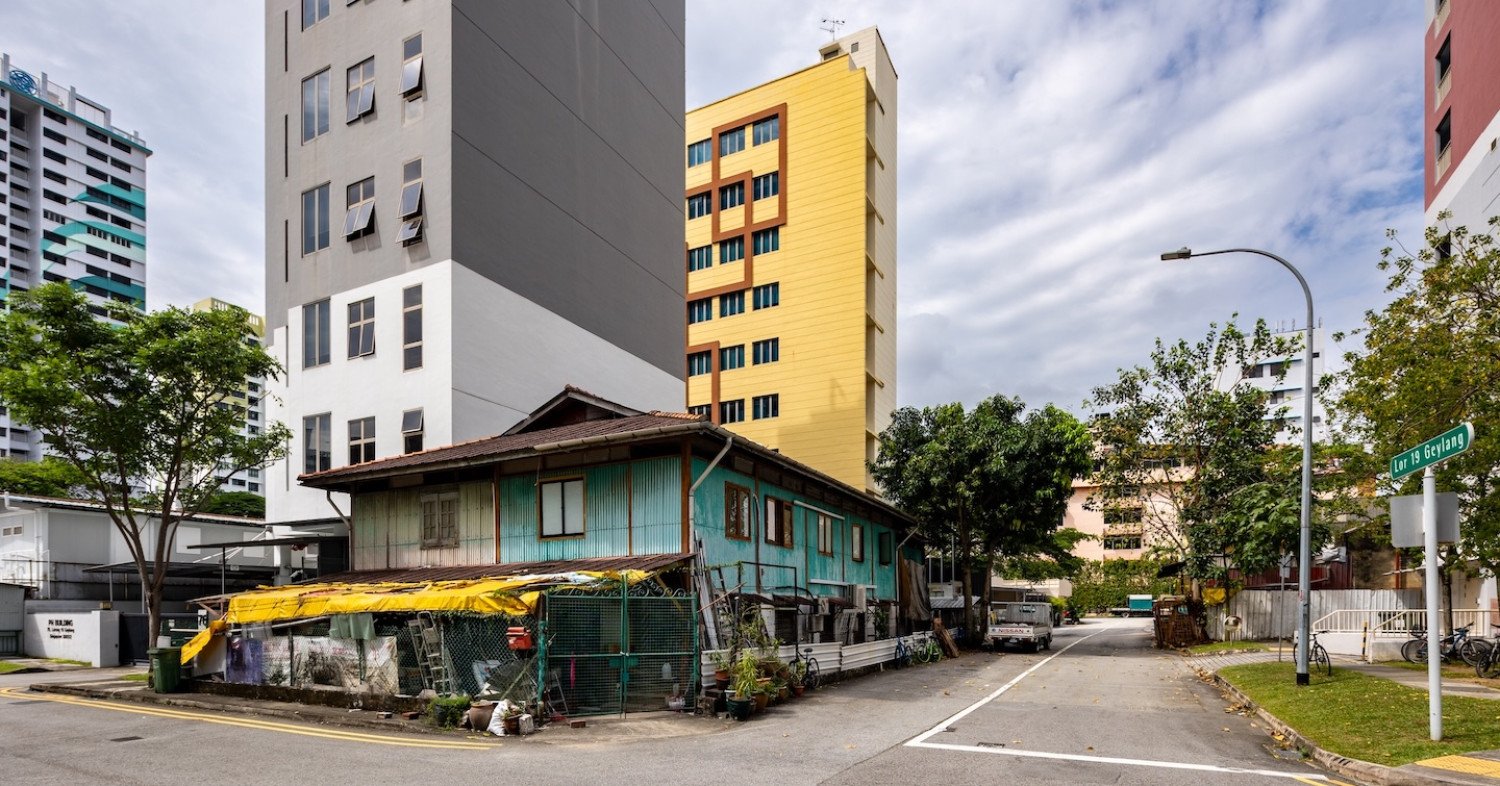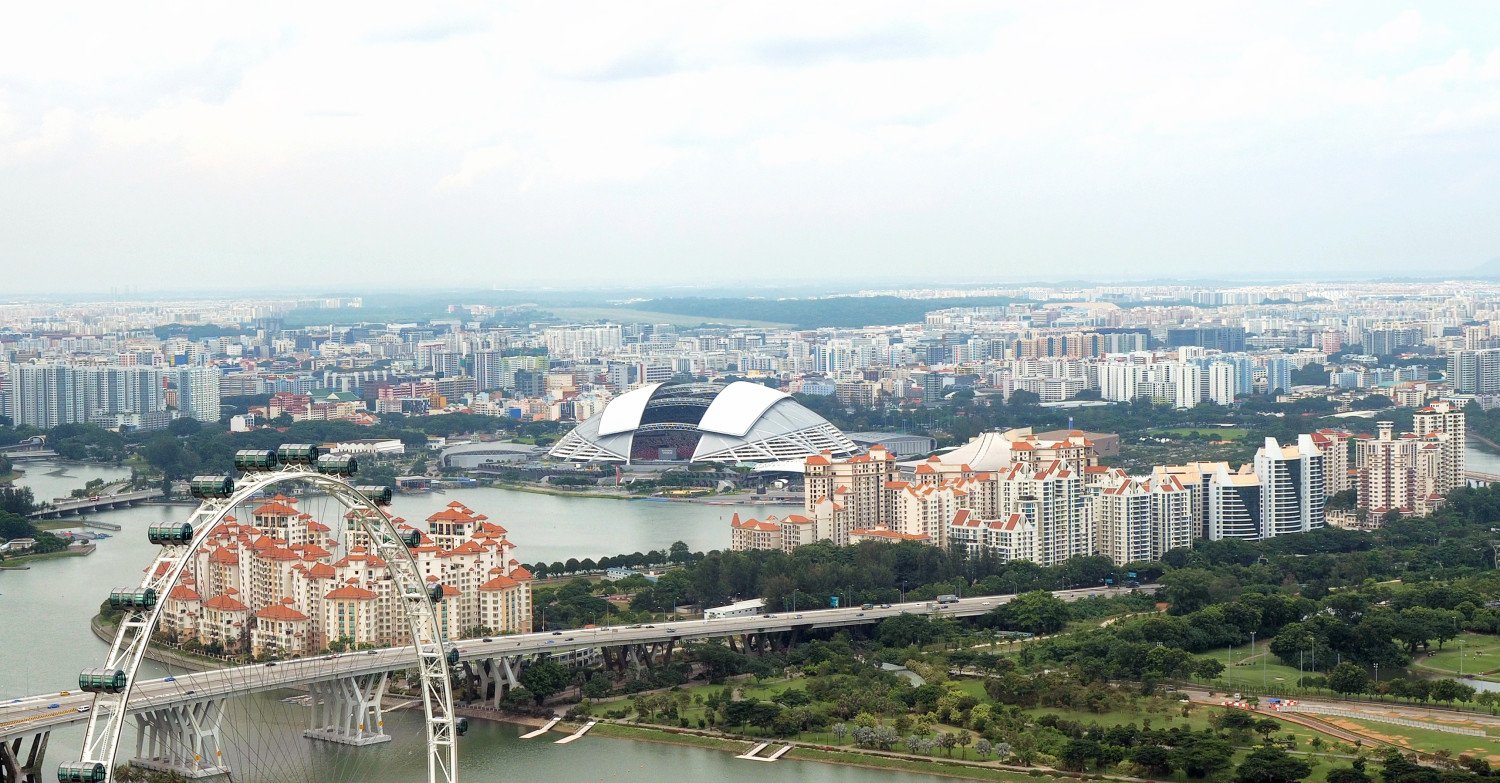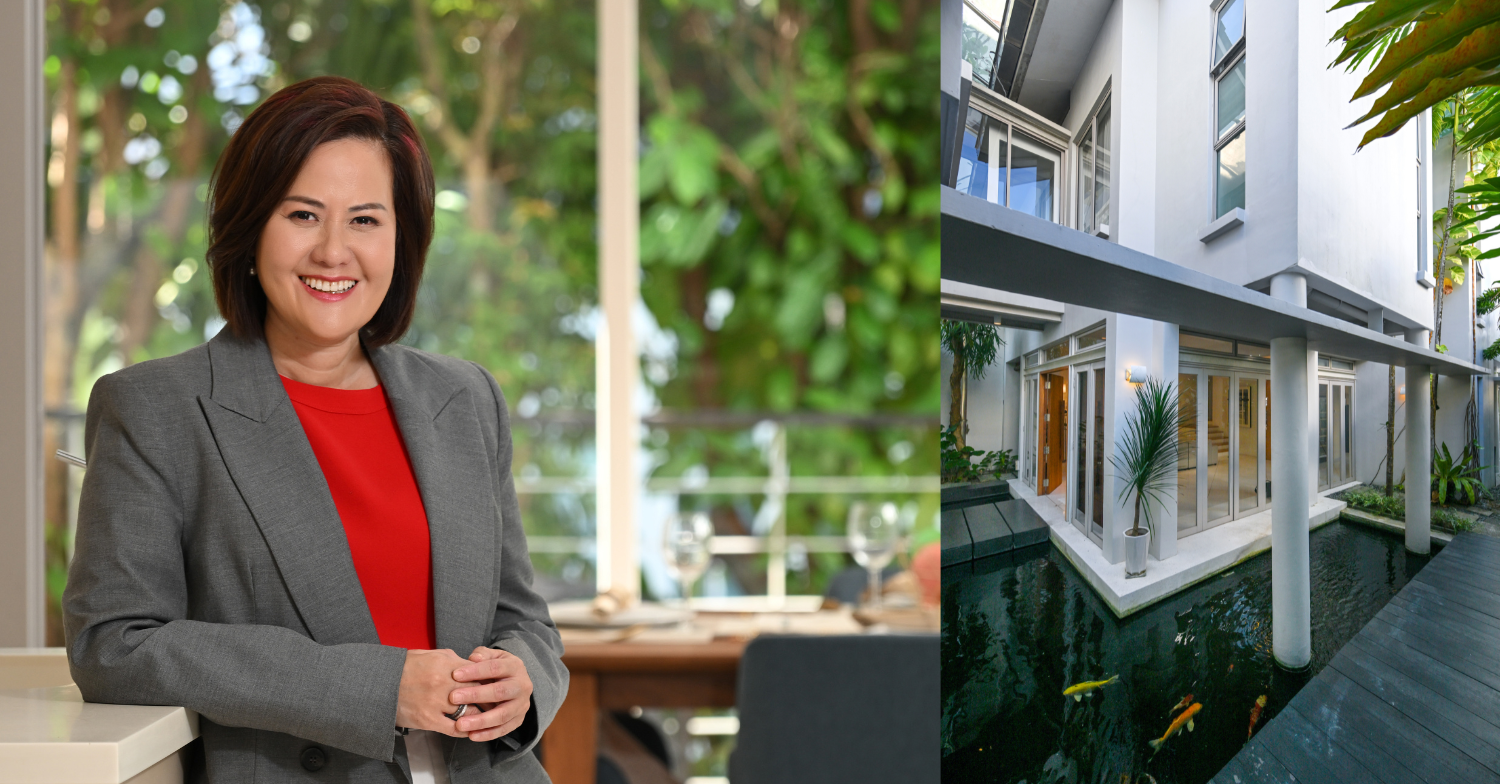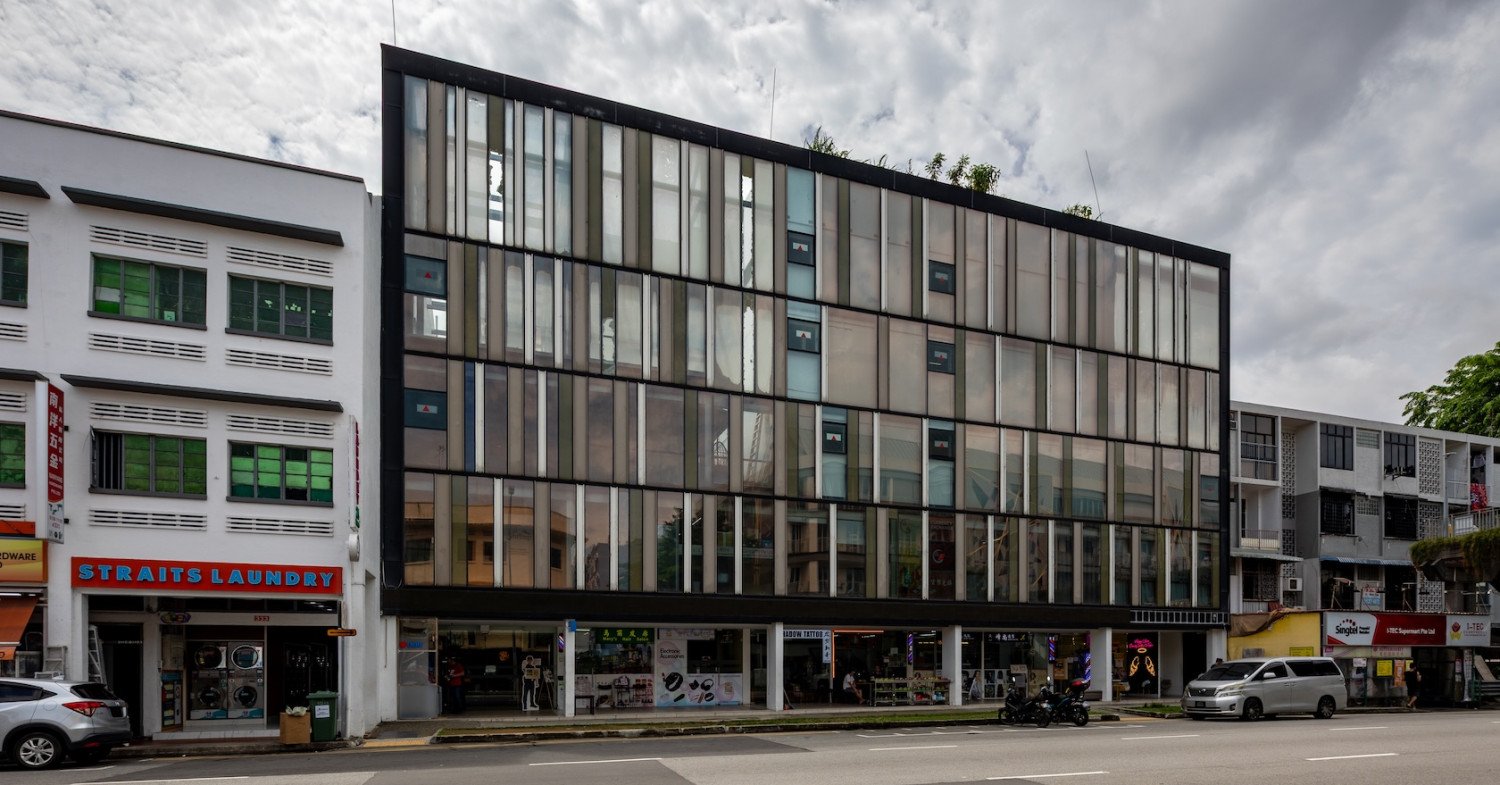
Along Geylang Road stands Pavilion Square, a mixed-use development comprising a three-storey retail podium at the front and an eight-storey apartment block at the rear. The freehold retail mall was completed in 2016, while the apartments obtained their Temporary Occupation Permit (TOP) in 2018.
The street-facing shops are tenanted by a hodgepodge of businesses — the most prominent being a tattoo studio, flanked by an electronics accessories shop, two hair salons and a beauty spa.
When Pavilion Square at 345 Geylang Road was launched by developer Pollux Properties in April 2013, buyers rushed in. All 93 strata-titled shops were snapped up in a day. The seven units fronting the street were each sold for over $10,000 psf, with the priciest fetching $10,879 psf and setting a record for new strata-titled retail shops at the time.
Empty units along one of the internal corridors of Level 1 (Photo: Samuel Isaac Chua/EdgeProp Singapore)
Price descent
One of the smallest units, measuring just 86 sq ft and located on the first level, sold for $748,068 ($8,687 psf) in April 2013. Based on a caveat lodged in June 2024, the same unit changed hands for $180,000 ($2,090 psf). But that wasn’t the lowest price recorded.
The all-time low was for two adjacent second-level shops of 129 sq ft each, which fetched $165,000 apiece ($1,277 psf), according to caveats lodged in early May. The previous owner had purchased the units in a sub-sale, paying $755,000, or $5,845 psf each, in late 2013 and early 2014. The resale represents a 78% plunge in value, highlighting the sharp reversal of fortune for strata retail investors.
The bustle that many investors had hoped for never materialised. When EdgeProp visited Pavilion Square on Friday, June 7, the mall was quiet. Except for the units facing the main road, which are all taken up, the first level had many vacant units with “For Sale” or “For Rent” signs on their frontages.
Swifty Store on the first level occupies a 194 sq ft unit, the result of merging two back-to-back 97 sq ft units (Photo: Samuel Isaac Chua/EdgeProp Singapore)
Low footfall
One of the occupants on the first level is Swiftly Store, which sells a wide range of electronics and offers repair services for Windows computing products. The shop opened at Pavilion Square last November.
According to manager Umar, Swiftly Store relies heavily on online sales via TikTok Live, Lazada and its own e-commerce platform. “About 70% of our customers buy online; 30% come into the store,” he says. “That’s why we opened a physical outlet — for those who prefer to walk in and purchase.”
However, with low footfall, business is tough. “It’s very, very hard,” says Umar. Only regular customers stop by. The store occupies 194 sq ft, which resulted from the merger of two back-to-back 97 sq ft units. He estimates the monthly rent is about $2,300 ($11.86 psf).
In comparison, another 108 sq ft unit on the first level is listed for rent at $1,000 a month ($9.26 psf a month). Another similar-sized unit on the second level is listed for sale at $750,000 ($6,944 psf) and for rent at $850 a month ($7.87 psf).
Units along another corridor at Level 1 (Photo: Samuel Isaac Chua/EdgeProp Singapore)
Good for an office
The second level felt quiet, with long stretches of mostly empty shopfronts. Alex Zhou, founder of MZ Employment Agency, occupies a unit at the end of one of these corridors.
Zhou moved into Pavilion Square several months ago, having found the unit while searching online for affordable office space. He rents a 140 sq ft corner unit for about $1,000 a month. “It’s quite reasonable,” he says. “And the location is good in terms of accessibility, for an office.”
Zhou isn’t surprised that prices have plummeted. The lack of foot traffic is a major issue, he notes, pointing to one recently vacated unit and another now used for storage. “There are a few contractors and a landscape design company on this floor, but mostly, it’s very quiet.”
Units along one of the corridors of Level 2 (Photo: Samuel Isaac Chua/EdgeProp Singapore)
For Zhou, the quiet has its upsides. “It’s actually good for an office.”
Another tenant on the second level is NIK Fire Contractor, a subcontractor for fire protection, fire alarm, and fire safety systems, primarily for commercial projects. The firm moved into its 183 sq ft unit in 2020. Back then, monthly rent was just $850, according to Michelle, the manager. Today, it’s $1,000.
“Tenants here keep changing,” says Michelle. “But working here is fine since we are using the unit as an office.”
Directly opposite is a new tenant — a contractor named Mr Huang, who moved in three months ago. He pays $900 to $1,000 monthly for his 129 sq ft unit and appreciates the convenience, especially being near the CBD.
Units near the escalator on Level 2 (Photo: Samuel Isaac Chua/EdgeProp Singapore)
The quiet levels
The third level is even quieter. The escalator going up to the level is no longer working — only the one going down is operational. All the units are vacant, except for one: 3PM Patisserie, a bakery making custom cakes for delivery or pickup.
Amy, the baker, has been there for two years and mostly works alone. Most customers collect their cakes in person. But when she works late, she locks the main door.
At Level 3, the escalator going up to the level is not working (Photo: Samuel Isaac Chua/EdgeProp Singapore)
Many of the units on the third level are empty (Photo: Samuel Isaac Chua/EdgeProp Singapore)
She points to where a CCTV camera used to be. It was removed after a neighbouring karaoke bar closed. Another nearby unit had been slated for a café selling bagels, ice cream and milkshakes. But the tenant failed to secure an F&B licence and never moved in. The unit is now listed for sale and rent.
In the basement level, many of the units have been turned into storage space. A 118 sq ft unit there changed hands in a sub-sale for $695,000 ($5,870 psf) in September 2014. The original buyer had paid $583,128 ($4,967 psf) in April 2013. That sub-sale remains the last recorded transaction for a basement-level unit.
Many of the units on the Basement Level have been leased as storage space (Photo: Samuel Isaac Chua/EdgeProp Singapore)
The units at the other end of the corridor in Basement Level (Photo: Samuel Isaac Chua/EdgeProp Singapore)
Strata retail: A trend fuelled by fomo
In 2013, several mixed-use projects featuring strata-titled commercial units, primarily retail, were launched. These units were often small, with palatable price tags to attract individual investors.
Notable examples include Alexandra Central, launched in January 2013, where all but one of the 115 strata shops were sold within a day. Another is Novena Regency, with 45 commercial units and 55 residential units, all taken up in the first week. KAP @ King Albert Park features 107 strata-titled shops and 142 residential units. The Midtown and Midtown Residences, a mixed-use development with 107 retail and F&B units and 160 residential units. Both KAP and The Midtown were launched in May 2013.
These launches were in reaction to a wave of property cooling measures introduced by the government from 2011 to 2013. These included the Additional Buyer’s Stamp Duty (ABSD), Seller’s Stamp Duty (SSD), and lower borrowing limits. Many investors, deterred by the residential cooling measures, turned to strata-titled commercial units instead.
“These projects were marketed as vibrant developments that would enjoy strong footfall due to their street frontage,” says Mary Sai, executive director of investment sales and capital markets at Knight Frank Singapore.
But the reality proved starkly different. “Moreover, strata-titled retail malls suffer from fragmented ownership. Without a single landlord or a professional leasing and property management team — like those in REIT-owned malls — they struggle to attract consistent foot traffic,” Sai adds.
In March 2022, recognising the issues arising from such developments, URA introduced restrictions on strata subdivision of commercial components in new projects under the Government Land Sales (GLS) programme.
Sai believes the key takeaway is clear: “Don’t fall for the herd mentality or fomo [fear of missing out],” she says.
For owners of such units, options are limited. “Either lease out the unit to cover some costs, or cut losses and sell,” says Sai.

